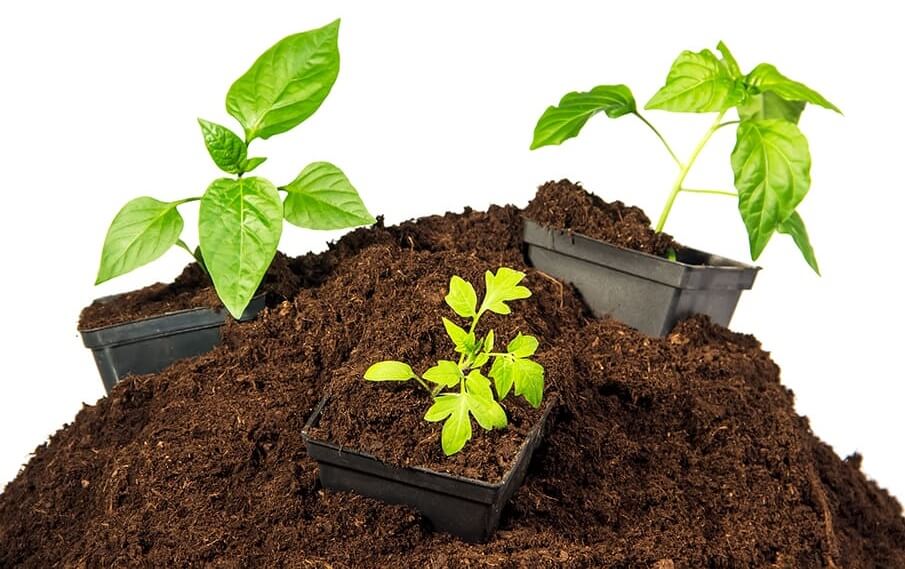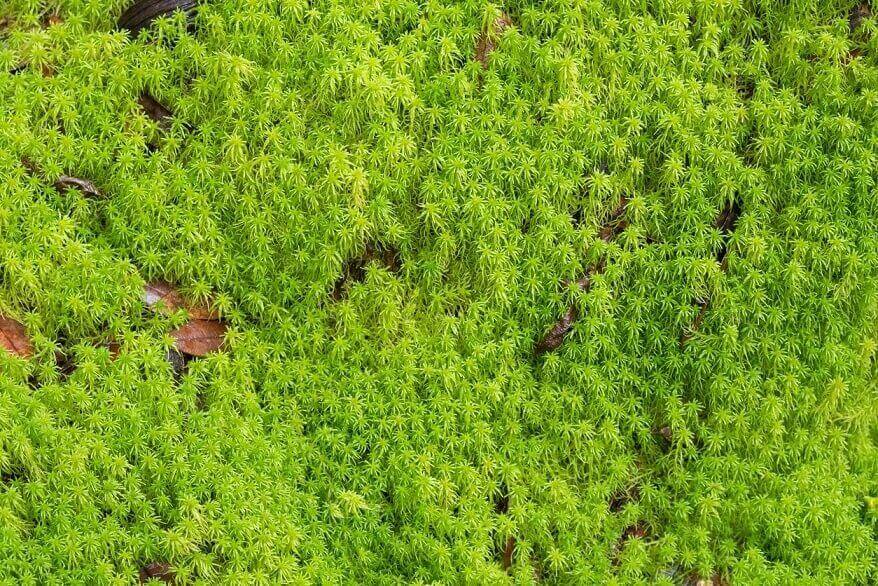While they both sound same, there is quite difference among them. And an experienced gardener would known the difference between them and choose the right one among them. But if you are newly venturing in planting or gardening and want to know everything about them to make a wise decision, then this article is for you. Here, we will explain differences clearly along with some recommendations, where you should use it and other aspect of sustainability.
Peat Moss Overview
Peat moss can be described as a bog. This is when the sphagnum-moss has been layered and is no longer active. Peat bogs are formed when the fibrous material has been removed. These peat bogs also contain plants, twigs and insects. It is similar to sphagnum and has high water retention. Peat moss can be easily found as a soil amendment, and many people mistake it for sphagnum. They are sometimes called “sphagnum peatmoss”. The formation of peat moss takes thousands of years. It is high in both tannins and acid. It is still widely used in garden soils, despite all this. Peat moss can also be great for acid-loving plants. Because of its incredible water retention, peat moss is great for growing tomatoes and pepper. It is also available in milled and long-fibered versions, just like sphagnum. It will not change the pH of potting soil or garden soil, despite all this. There has been a significant loss of peat bogs, so people are looking for other options.
Uses for Peat Moss
Peatmoss is a soil amendment that improves its suitability for gardening. It is an excellent choice to acid-loving plants because of its low pH. It is often used in combination with plants that don’t like an acidic environment.
Best lawn mower blades Best lawn sweepers Best zero turn lawn mower Best Weed Killers Best lawn sprinklers Best push lawn mowers
As a soil amendment, peat moss is primarily used to increase water retention and add density that doesn’t disrupt airflow. It retains water well but does not compact as well as soil. This makes it an excellent choice for keeping plants well-watered and without choking them. There are many plant varieties that love sphagnum peatmoss, including blueberries, camellias, tomatoes and azaleas
Properties of Peat Moss
Less expensive compared to sphagnum moss Perfect for acid-loving plants Sold in compressed and bale form Suitable for potting and gardening soil Includes mixture of twigs, insects, plants, and moss Doesn’t have any noticeable plant parts due to its fixture
Sphagnum Moss Overview
Because of its high water-retentive capacity, sphagnum is a favorite choice for garden owners and plant lovers. Sphagnum moss is soft and supple, creating dense clumps. It can be used to start seeds or for other purposes. Sphagnum moss has the advantage of being able to add potting soil amendments. It can also be used in winter to create mulch. It can grow on soil surfaces. It thrives in moist, shaded conditions with plenty of rain. It can be purchased commercially and is fully dried. Sphagnum moss can be purchased in two variants: fibered or milled. The fibered form is more natural and comes in finely chopped form. It is available in smaller bags and costs more than peat moss so it is not a standard tool for every gardener.
Uses of Sphagnum Moss
For decorative topiaries, sphagnum moss is used often. Sphagnum moss sticks are also used to support the aerial roots for aroid plants by many people. It has a neutral pH which is a great thing about it. It can also contain fungal spores, which can cause health problems. When handling sphagnum moss, it is always best to wear gloves. Sphagnum moss has a pH of zero, making it suitable for use in potting soil. It can be used as a pure moss without the addition of any other plant material. It can be used for line baskets, moss sticks, or seed starter medium.
Properties of Sphagnum Moss
Highest water retention ability Neutral in terms of pH Long-fibered texture so it will stay in its natural form Pure and natural without any plant materials or insects Perfect for growing medium as it is supple and soft Suitable as growth material
Why Is Differentiating Between Peat Moss and Sphagnum Moss Important?
Just because peat moss comes from dead part and sphagnum moss comes from living part of the plant doesn’t mean they have similar impact. For example, peat moss is acidic and sphagnum moss is pH neutral. So, their abilities and features different as it is important for the gardeners to know them so that they don’t get confused and use a wrong one.
Similarities Between Sphagnum Moss and Peat Moss
Although there are several differences between these two options, you can find two striking similarities.
1. Both are Moss
Although both peat and sphagnum moss are made from same plant, they grow in different environments. The soil is not always the best, but the moss remains the same. Two sides of the same coin are sphagnum and peat moss. The way we refer to it after it has been packaged for sale will depend on the location it was grown.
2. Water retention
Although sphagnum is composed of less water, both types are good at water retention. Both sphagnum and peat moss can hold 20-30 times their own weight in water. In some cases, peat moss can retain more than 50 percent of its own weight in water.
Peat Moss and Sphagnum Moss – Differences Between Them
Though these two grow from the same plant, there are some factors the differentiate them. We have mentioned them below for your reference.
1. Decomposition
As you already know, sphagnum moss builds over the swamp surface or on the soil. But peat moss grows below the waterline in the cloudy depths. But when the plant matter is too saturated with water, it starts to decay which exactly what happens with peat moss. Peat moss can be added to the soil of your indoor plants when it is still living but has begun to decompose. In certain conditions, you can reuse the moss once it is dead. Peat moss, however, is well past the stage of decomposition when compared to surface-growing Sphagnum moss.
2. Organic Matter
As it develops above the water’s surface (a reminder), sphagnum does not have DOM. However, it may contain SOM (soil-organic-matter). This SOM consists of organic matter such as humus, decomposing matter, and residues of plant. Sphagnum may have a smaller amount SOM than peat moss, but it might contain more DOM. As sphagnum contains fewer organic material compared to peat moss, you may miss certain soil benefits. You can balance the difference by including compost to your soil.
3. Age
If you are extracting sphagnum from a swamp or bog, it is recommended to give the moss 5 to 6 more years at least to mature enough to be harvested. Therefore, it is reasonable to assume that the majority of sphagnum found in indoor plants’ pots is older than five years. However, it is possible that some of it may take older than that. Though the average age was twice as high, it wouldn’t be older than peatmoss.
4. Fibres
It can be difficult to tell the difference visually between sphagnum and peat moss when they reach the consumer, in order to get into your plant’s soil. However, it is much easier to determine which mosses are which when they are free to grow in their natural environments. Peat moss often has the texture you associate with moss. It is a thin, bright green moss that looks almost like turf. It will be damp and squishy if you touch it or walk on it. Although sphagnum moss can be moist and mushy, it is not like turf. It instead grows visible fibres.
5. Ph Scale
When you choose soil amendments for indoor plants, it is important to carefully consider where every amendment falls on the pH scale. You should not use any amendments that are too basic or acidic if the soil is more neutral. You can use soil with slightly acidic amendments for acidic soil. The same rules apply to alkaline soil indoor plants. Although you might only be familiar with tannins in coffee, they are a natural composite that is astringent as well as bitter. They can be found in almost any plant matter, including peat moss. Peat moss is more acidic because it contains tannins. The pH range for this species ranges between 3.0 and 4.5.
Are Sphagnum Moss and Peat Moss the Same?
There are more than 350 species of sphagnum moss. These plants species can provide sphagnum moss and peat moss. Sphagnum moss is harvested in wetlands and grows in bogs. After draining, it forms sphagnum moss. It is a living plant that is harvested when it is alive. Peat moss on the other hand is settled on the sphagnum bogs’ bottom. It includes dead and decayed plant and insect materials. It has to be noted that both peat moss and sphagnum moss are dead and decayed before harvesting. Sphagnum moss and peat moss may be the same as both have the great water-retaining ability and are derived from sphagnum moss.
Conclusion
For any budding gardener, it is important to understand the differences among sphagnum and peat moss. Though they come from the same plant (but different parts), there are several differences and some similarities between them. Using the right one makes a huge difference and a wrong choice can obviously impact the plants. To help you understand the differences, we have presented detail representation in this article. We hope the information has helped you. If you still have any questions, write to us in the comment section below. We shall reply at the earliest. Comment * Name * Email * Website
Δ







![]()